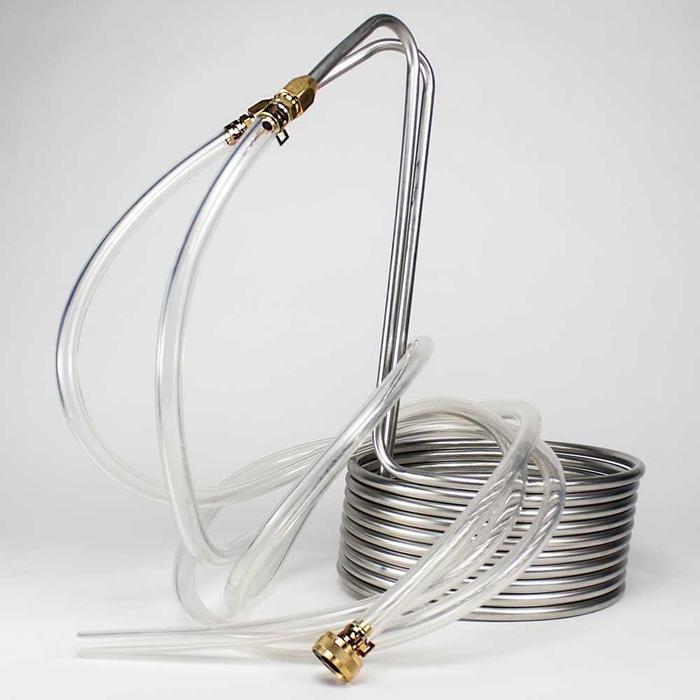Brian Parfitt
Well-Known Member
- Joined
- Apr 17, 2020
- Messages
- 45
- Reaction score
- 4
I've recently upgraded to a DIY HERMS setup and had some questions about Mash temps.
I currently monitor temperature in my HLT where the HERMS coil is parked as well as at the discharge of the HERMS coil. I take measurements of the grain bed temperature throughout the brew cycle with a handheld thermometer. In general, I find the grain bed to be 7-8 degrees cooler than the water temp in the HLT and the discharge out of the coil.
So what is more important to control? The temperature of the wort/grain bed? Or the temperature of the wort as it passes through the coil in the HLT?
On one hand. you don't want the grain bed to drift too low, but on the other hand, if the HLT temp is 8-9 degrees warmer, does that adversely effect the wort as it passes through? i.e. You have conversion taking place for that brief window within the coil at a higher temperature.
My intuition tells me that the wort spends so little time passing through the coil that it all just averages out to the actual grain bed temperature anyway. Just curious to see what others thought.
Brian
I currently monitor temperature in my HLT where the HERMS coil is parked as well as at the discharge of the HERMS coil. I take measurements of the grain bed temperature throughout the brew cycle with a handheld thermometer. In general, I find the grain bed to be 7-8 degrees cooler than the water temp in the HLT and the discharge out of the coil.
So what is more important to control? The temperature of the wort/grain bed? Or the temperature of the wort as it passes through the coil in the HLT?
On one hand. you don't want the grain bed to drift too low, but on the other hand, if the HLT temp is 8-9 degrees warmer, does that adversely effect the wort as it passes through? i.e. You have conversion taking place for that brief window within the coil at a higher temperature.
My intuition tells me that the wort spends so little time passing through the coil that it all just averages out to the actual grain bed temperature anyway. Just curious to see what others thought.
Brian








































![Craft A Brew - Safale BE-256 Yeast - Fermentis - Belgian Ale Dry Yeast - For Belgian & Strong Ales - Ingredients for Home Brewing - Beer Making Supplies - [3 Pack]](https://m.media-amazon.com/images/I/51bcKEwQmWL._SL500_.jpg)

















